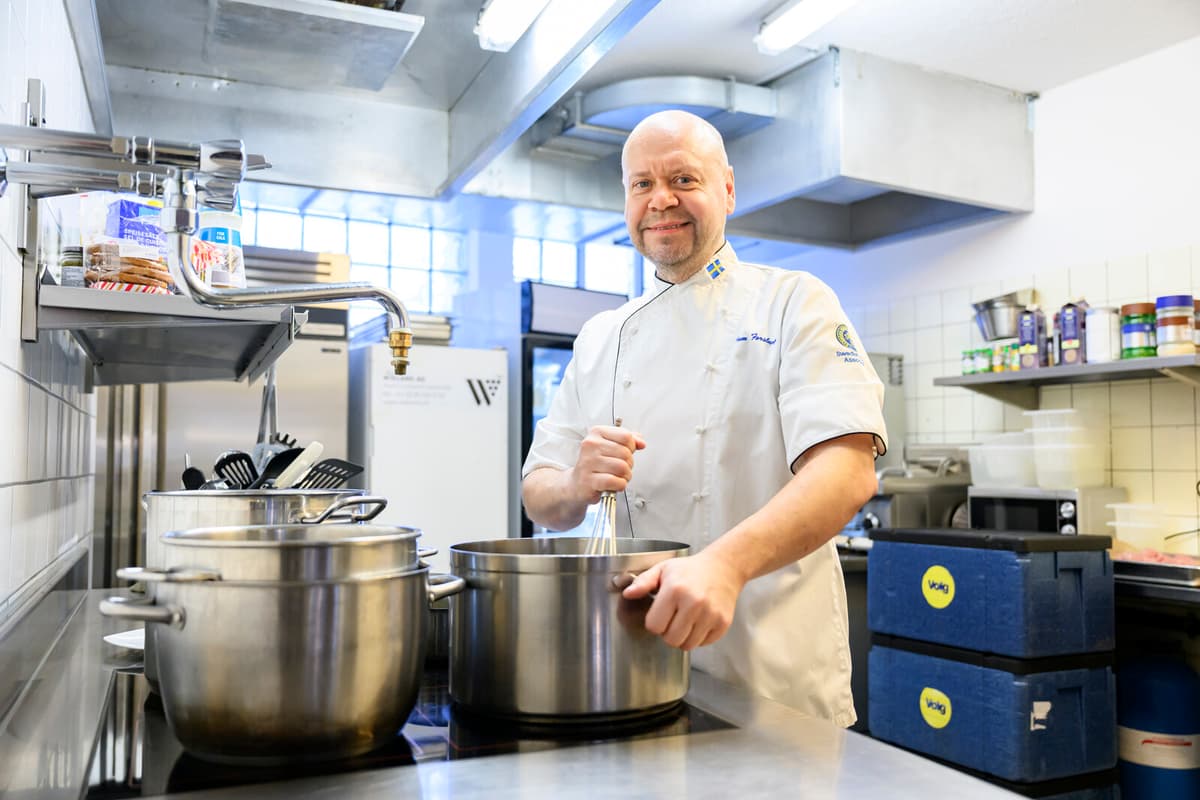Cost is crucial for biathletes, to have the energy to compete and recover for the next race.
Four years ago, Hanna Öberg exhausted herself completely in the first race and then failed in the subsequent competitions before it was discovered that it was due to energy deficiency, and she was put on a pizza and candy diet.
Now, the national team has its own chef with them at almost all World Cup competitions and at the World Championship. Tom Forsberg prepares meals for five meals a day and 60 portions for 30 people – athletes, leaders, and waxers.
They need to eat such large quantities of food to cope with the training and competitions. It becomes tough for them. You say, "okay, let's have a snack" just two hours after lunch, he says.
No Cream
He says that variation is the most important thing to get the athletes to eat. But there are almost no stews and hardly any cream in the food, because the athletes want to choose themselves how much sauce they take and they don't want too much fat.
The athletes are very pleased to have their own chef with them nowadays.
Before, especially in some countries, the food was incredibly bad. Then it's really a big boost when you have your own chef who can cook the food instead, says Martin Ponsiluoma.
Anna Magnusson agrees:
It's a huge plus to be able to control it so it becomes perfect. I've had some problems with my stomach from time to time and I like to eat oatmeal porridge in the morning. It can be tricky when you're staying at a hotel with language barriers and getting it right on time, she says.
All athletes are connected to one of the Swedish Olympic Committee's (SOK) nutritionists, whom they have regular contact with to plan the right diet for each individual, just so that there isn't energy leakage.
The Nutritionist is in Charge
During the World Championship, the girls' nutritionist Linda Bakkman is in Lenzerheide.
It's mostly her who's in charge, she knows us so well. But if you have other wishes, you say so, says Hanna Öberg.
We have all the prerequisites for it to work as optimally as possible.
Of course, there's some kind of dessert after dinner. After Elvira Öberg's silver in the pursuit, it was celebrated with 46 semlor baked.
And on Tuesday (tonight) it'll be kladdkaka according to Elvira's recipe. Super tasty, says Tom Forsberg.
The Swedish national team is around 30 people with athletes, leaders, and waxers during the World Championship.
+ 5 kilos of yoghurt and 5 kilos of quark every day
+ 12 large baguettes (baked by the chefs) every day
+ 400 grams of potatoes per person and meal
+ 150-200 grams of uncooked pasta per person and meal
+ 250 grams of protein as meat, poultry, or fish per person and meal
+ Plus large quantities of eggs, vegetables, fruit, juice, milk, and toppings, etc.
Sebastian Samuelsson:
I like to grill in the summer, but it doesn't happen much here. When it comes to biathlon food, it's pasta, some chicken, and a good salad.
Anna Magnusson:
Just on competition days and when you've trained a lot and hard, I think spaghetti and meatball sauce is easy to eat a lot of and it's really good.
Hanna Öberg:
When we're out here, it's when we're treated to pokebowls, it's a highlight.





